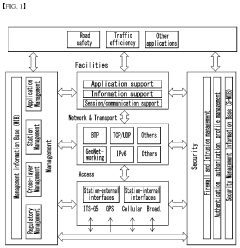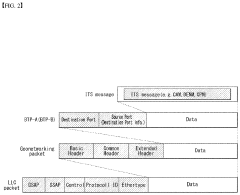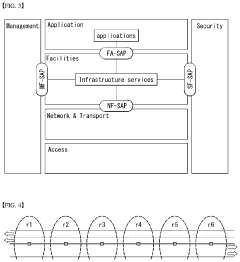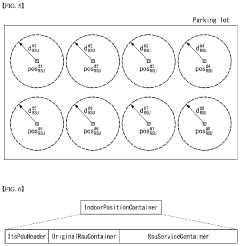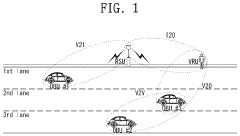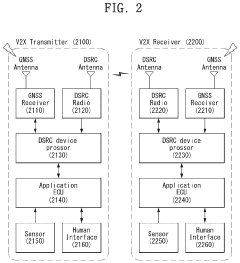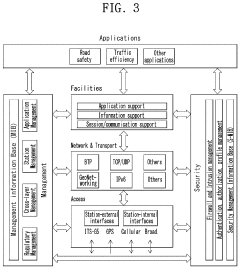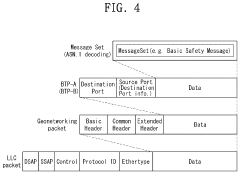How V8 Engines Enable Smart Automotive Technologies?
JUL 4, 20259 MIN READ
Generate Your Research Report Instantly with AI Agent
Patsnap Eureka helps you evaluate technical feasibility & market potential.
V8 Engine Evolution
The evolution of V8 engines has played a crucial role in enabling smart automotive technologies. This powerful engine configuration has undergone significant transformations since its inception, adapting to changing market demands and technological advancements.
In the early days, V8 engines were primarily focused on raw power and performance. They were the heart of muscle cars and luxury vehicles, offering impressive acceleration and top speeds. However, these early iterations were often inefficient and environmentally unfriendly, consuming large amounts of fuel and producing high emissions.
As environmental concerns grew and fuel efficiency became a priority, V8 engine development shifted towards optimization. Engineers began implementing technologies such as variable valve timing, direct fuel injection, and cylinder deactivation. These innovations allowed V8 engines to maintain their power output while significantly reducing fuel consumption and emissions.
The advent of electronic control units (ECUs) marked a turning point in V8 engine evolution. ECUs enabled precise control over various engine parameters, allowing for real-time adjustments based on driving conditions. This development paved the way for more advanced engine management systems, which are fundamental to modern smart automotive technologies.
In recent years, the integration of V8 engines with hybrid powertrains has further revolutionized their capabilities. This combination allows vehicles to harness the power of the V8 for high-performance driving while utilizing electric motors for improved efficiency in urban environments. The result is a versatile powertrain that can adapt to various driving scenarios, enhancing both performance and fuel economy.
The latest generation of V8 engines incorporates advanced materials and manufacturing techniques, such as 3D printing for complex components and lightweight alloys for reduced mass. These innovations have led to engines that are more compact, lighter, and more thermally efficient than their predecessors.
Moreover, modern V8 engines are equipped with sophisticated sensors and connectivity features, enabling them to communicate with other vehicle systems and external networks. This integration is crucial for implementing smart automotive technologies such as adaptive cruise control, predictive maintenance, and over-the-air updates.
The evolution of V8 engines has thus transitioned from purely mechanical systems to highly intelligent, interconnected powerplants. They now serve as a platform for implementing a wide array of smart technologies, from advanced driver assistance systems to autonomous driving capabilities. As V8 engines continue to evolve, they are likely to play an increasingly important role in the development of smart, connected, and efficient vehicles of the future.
In the early days, V8 engines were primarily focused on raw power and performance. They were the heart of muscle cars and luxury vehicles, offering impressive acceleration and top speeds. However, these early iterations were often inefficient and environmentally unfriendly, consuming large amounts of fuel and producing high emissions.
As environmental concerns grew and fuel efficiency became a priority, V8 engine development shifted towards optimization. Engineers began implementing technologies such as variable valve timing, direct fuel injection, and cylinder deactivation. These innovations allowed V8 engines to maintain their power output while significantly reducing fuel consumption and emissions.
The advent of electronic control units (ECUs) marked a turning point in V8 engine evolution. ECUs enabled precise control over various engine parameters, allowing for real-time adjustments based on driving conditions. This development paved the way for more advanced engine management systems, which are fundamental to modern smart automotive technologies.
In recent years, the integration of V8 engines with hybrid powertrains has further revolutionized their capabilities. This combination allows vehicles to harness the power of the V8 for high-performance driving while utilizing electric motors for improved efficiency in urban environments. The result is a versatile powertrain that can adapt to various driving scenarios, enhancing both performance and fuel economy.
The latest generation of V8 engines incorporates advanced materials and manufacturing techniques, such as 3D printing for complex components and lightweight alloys for reduced mass. These innovations have led to engines that are more compact, lighter, and more thermally efficient than their predecessors.
Moreover, modern V8 engines are equipped with sophisticated sensors and connectivity features, enabling them to communicate with other vehicle systems and external networks. This integration is crucial for implementing smart automotive technologies such as adaptive cruise control, predictive maintenance, and over-the-air updates.
The evolution of V8 engines has thus transitioned from purely mechanical systems to highly intelligent, interconnected powerplants. They now serve as a platform for implementing a wide array of smart technologies, from advanced driver assistance systems to autonomous driving capabilities. As V8 engines continue to evolve, they are likely to play an increasingly important role in the development of smart, connected, and efficient vehicles of the future.
Smart Auto Market Trends
The automotive industry is undergoing a significant transformation, driven by the convergence of smart technologies and traditional vehicle engineering. V8 engines, long associated with high-performance vehicles, are now at the forefront of enabling smart automotive technologies. This integration is reshaping market trends and consumer expectations in the smart auto sector.
The global smart automotive market is experiencing rapid growth, with projections indicating substantial expansion in the coming years. This growth is fueled by increasing consumer demand for connected, autonomous, and electrified vehicles. V8 engines, known for their power and performance, are being reimagined to support these smart technologies while maintaining their signature characteristics.
One of the key trends in the smart auto market is the integration of advanced driver assistance systems (ADAS) with powerful engines. V8-equipped vehicles are incorporating features such as adaptive cruise control, lane-keeping assist, and automatic emergency braking, enhancing safety without compromising performance. This trend is particularly evident in the luxury and high-performance segments, where consumers expect both cutting-edge technology and exhilarating driving experiences.
Another significant trend is the development of hybrid and mild-hybrid systems for V8 engines. These technologies allow for improved fuel efficiency and reduced emissions while preserving the power output that V8 enthusiasts crave. The market is seeing an increase in vehicles that combine electric motors with V8 engines, offering instant torque and improved overall performance.
Connectivity is also a major focus in the smart auto market, and V8-powered vehicles are no exception. Manufacturers are integrating sophisticated infotainment systems, over-the-air update capabilities, and vehicle-to-everything (V2X) communication technologies into their V8 models. This connectivity enhances the driving experience, enables predictive maintenance, and paves the way for future autonomous features.
The rise of artificial intelligence and machine learning in automotive applications is another trend impacting V8-equipped vehicles. These technologies are being used to optimize engine performance, improve fuel efficiency, and enhance the overall driving dynamics. AI-powered systems can adapt to driving conditions and driver preferences in real-time, maximizing the potential of V8 engines in various scenarios.
As environmental concerns grow, there is a trend towards developing more sustainable V8 engines. This includes research into alternative fuels, such as hydrogen and synthetic fuels, which could allow V8 engines to continue operating in a carbon-neutral manner. Some manufacturers are exploring ways to make V8 engines more environmentally friendly without sacrificing their iconic sound and power delivery.
The smart auto market is also seeing a trend in personalization and customization, particularly in high-end V8-powered vehicles. Advanced manufacturing techniques and digital technologies are enabling consumers to tailor their vehicles to a greater degree than ever before, from performance characteristics to interior features and exterior aesthetics.
The global smart automotive market is experiencing rapid growth, with projections indicating substantial expansion in the coming years. This growth is fueled by increasing consumer demand for connected, autonomous, and electrified vehicles. V8 engines, known for their power and performance, are being reimagined to support these smart technologies while maintaining their signature characteristics.
One of the key trends in the smart auto market is the integration of advanced driver assistance systems (ADAS) with powerful engines. V8-equipped vehicles are incorporating features such as adaptive cruise control, lane-keeping assist, and automatic emergency braking, enhancing safety without compromising performance. This trend is particularly evident in the luxury and high-performance segments, where consumers expect both cutting-edge technology and exhilarating driving experiences.
Another significant trend is the development of hybrid and mild-hybrid systems for V8 engines. These technologies allow for improved fuel efficiency and reduced emissions while preserving the power output that V8 enthusiasts crave. The market is seeing an increase in vehicles that combine electric motors with V8 engines, offering instant torque and improved overall performance.
Connectivity is also a major focus in the smart auto market, and V8-powered vehicles are no exception. Manufacturers are integrating sophisticated infotainment systems, over-the-air update capabilities, and vehicle-to-everything (V2X) communication technologies into their V8 models. This connectivity enhances the driving experience, enables predictive maintenance, and paves the way for future autonomous features.
The rise of artificial intelligence and machine learning in automotive applications is another trend impacting V8-equipped vehicles. These technologies are being used to optimize engine performance, improve fuel efficiency, and enhance the overall driving dynamics. AI-powered systems can adapt to driving conditions and driver preferences in real-time, maximizing the potential of V8 engines in various scenarios.
As environmental concerns grow, there is a trend towards developing more sustainable V8 engines. This includes research into alternative fuels, such as hydrogen and synthetic fuels, which could allow V8 engines to continue operating in a carbon-neutral manner. Some manufacturers are exploring ways to make V8 engines more environmentally friendly without sacrificing their iconic sound and power delivery.
The smart auto market is also seeing a trend in personalization and customization, particularly in high-end V8-powered vehicles. Advanced manufacturing techniques and digital technologies are enabling consumers to tailor their vehicles to a greater degree than ever before, from performance characteristics to interior features and exterior aesthetics.
V8 Tech Challenges
The integration of V8 engines into smart automotive technologies presents several significant challenges that require innovative solutions. One of the primary obstacles is balancing the power output of V8 engines with the increasing demand for fuel efficiency and reduced emissions. As environmental regulations become more stringent, manufacturers must develop advanced engine management systems and exhaust aftertreatment technologies to ensure V8 engines comply with these standards without compromising performance.
Another critical challenge lies in the seamless integration of V8 engines with hybrid and electric powertrains. The development of sophisticated control systems that can effectively manage the interplay between traditional combustion power and electric propulsion is crucial for optimizing overall vehicle performance and efficiency. This integration requires complex algorithms and real-time data processing capabilities to ensure smooth power delivery and transition between power sources.
Weight reduction and packaging constraints pose additional hurdles for V8 engine implementation in modern vehicle designs. As automotive platforms evolve to accommodate various powertrain options and smart technologies, engineers must find innovative ways to reduce the mass of V8 engines and their associated components while maintaining structural integrity and performance characteristics. This often involves the use of advanced materials and manufacturing techniques to create more compact and lightweight engine designs.
The incorporation of smart technologies into V8-powered vehicles also presents challenges in terms of thermal management and NVH (Noise, Vibration, and Harshness) control. As vehicles become more electrified and equipped with advanced driver assistance systems, managing heat dissipation from both the engine and electronic components becomes increasingly complex. Additionally, ensuring a refined driving experience by minimizing engine noise and vibration while preserving the characteristic V8 sound is a delicate balance that engineers must strike.
Lastly, the development of advanced diagnostics and predictive maintenance systems for V8 engines in smart vehicles is an ongoing challenge. These systems must be capable of monitoring engine performance in real-time, detecting potential issues before they escalate, and providing accurate data for over-the-air updates and remote diagnostics. This requires the integration of sophisticated sensors, data analytics, and machine learning algorithms to enhance reliability and reduce maintenance costs for V8-powered smart vehicles.
Another critical challenge lies in the seamless integration of V8 engines with hybrid and electric powertrains. The development of sophisticated control systems that can effectively manage the interplay between traditional combustion power and electric propulsion is crucial for optimizing overall vehicle performance and efficiency. This integration requires complex algorithms and real-time data processing capabilities to ensure smooth power delivery and transition between power sources.
Weight reduction and packaging constraints pose additional hurdles for V8 engine implementation in modern vehicle designs. As automotive platforms evolve to accommodate various powertrain options and smart technologies, engineers must find innovative ways to reduce the mass of V8 engines and their associated components while maintaining structural integrity and performance characteristics. This often involves the use of advanced materials and manufacturing techniques to create more compact and lightweight engine designs.
The incorporation of smart technologies into V8-powered vehicles also presents challenges in terms of thermal management and NVH (Noise, Vibration, and Harshness) control. As vehicles become more electrified and equipped with advanced driver assistance systems, managing heat dissipation from both the engine and electronic components becomes increasingly complex. Additionally, ensuring a refined driving experience by minimizing engine noise and vibration while preserving the characteristic V8 sound is a delicate balance that engineers must strike.
Lastly, the development of advanced diagnostics and predictive maintenance systems for V8 engines in smart vehicles is an ongoing challenge. These systems must be capable of monitoring engine performance in real-time, detecting potential issues before they escalate, and providing accurate data for over-the-air updates and remote diagnostics. This requires the integration of sophisticated sensors, data analytics, and machine learning algorithms to enhance reliability and reduce maintenance costs for V8-powered smart vehicles.
V8 Smart Solutions
01 V8 Engine Design and Configuration
V8 engines are designed with eight cylinders arranged in two banks of four, forming a V-shape. This configuration allows for a compact design, improved power output, and balanced operation. Various aspects of V8 engine design, including cylinder arrangement, crankshaft configuration, and valve timing, are optimized for performance and efficiency.- V8 Engine Design and Configuration: V8 engines are designed with eight cylinders arranged in two banks of four, forming a V-shape. This configuration allows for compact packaging, improved balance, and higher power output compared to inline engines. Various design aspects, such as cylinder angle, firing order, and crankshaft configuration, are optimized for performance and efficiency.
- Fuel Injection and Combustion Systems: Advanced fuel injection and combustion systems are implemented in V8 engines to enhance performance and reduce emissions. These may include direct injection, variable valve timing, and cylinder deactivation technologies. Optimized fuel delivery and combustion processes contribute to improved power output, fuel efficiency, and environmental compliance.
- Turbocharging and Supercharging: Forced induction systems, such as turbochargers and superchargers, are often employed in V8 engines to increase power output and efficiency. These systems compress the intake air, allowing for more fuel to be burned and resulting in higher power density. Various configurations and control strategies are used to optimize boost pressure and minimize turbo lag.
- Engine Block and Component Materials: Advanced materials and manufacturing techniques are used in V8 engine construction to reduce weight, improve durability, and enhance thermal management. This may include the use of aluminum alloys, composite materials, and specialized coatings for engine blocks, cylinder heads, and internal components. Material selection and design contribute to overall engine performance and longevity.
- Lubrication and Cooling Systems: Efficient lubrication and cooling systems are crucial for V8 engine performance and reliability. These systems may incorporate advanced oil pumps, variable flow control, and targeted cooling strategies to maintain optimal operating temperatures and reduce friction. Improved thermal management contributes to increased power output, reduced wear, and extended engine life.
02 Fuel Injection Systems for V8 Engines
Advanced fuel injection systems are developed for V8 engines to improve fuel efficiency and performance. These systems may include direct injection, multi-port injection, or a combination of both. Innovations in fuel injector design, fuel pressure regulation, and electronic control units contribute to optimized fuel delivery and combustion in V8 engines.Expand Specific Solutions03 V8 Engine Cooling and Lubrication
Effective cooling and lubrication systems are crucial for V8 engine performance and longevity. Innovations in coolant circulation, oil pump designs, and heat management techniques are implemented to maintain optimal operating temperatures and reduce friction in high-performance V8 engines.Expand Specific Solutions04 V8 Engine Performance Enhancement
Various technologies are developed to enhance V8 engine performance, including turbocharging, supercharging, and variable valve timing. These advancements aim to increase power output, improve fuel efficiency, and reduce emissions while maintaining the characteristic V8 sound and driving experience.Expand Specific Solutions05 V8 Engine Manufacturing and Assembly
Innovative manufacturing processes and assembly techniques are employed in V8 engine production. These may include advanced casting methods, precision machining, and automated assembly lines. Quality control measures and testing procedures are implemented to ensure consistent performance and reliability of V8 engines.Expand Specific Solutions
Key V8 Manufacturers
The V8 engine technology in smart automotive applications is in a mature stage of development, with a significant market presence and ongoing innovation. The market size for V8-powered vehicles remains substantial, particularly in luxury and high-performance segments. Technologically, V8 engines have evolved to incorporate advanced features like cylinder deactivation, direct injection, and turbocharging, enhancing efficiency and performance. Key players such as Honda Motor Co., Ltd., GM Global Technology Operations LLC, and BMW AG have made significant strides in V8 engine development, integrating smart technologies for improved fuel economy and reduced emissions while maintaining the power and prestige associated with V8 engines in automotive applications.
Honda Motor Co., Ltd.
Technical Solution: Honda's approach to V8 engine technology in smart automotive applications is primarily focused on their racing division, particularly in IndyCar. Their V8 engines for IndyCar feature direct fuel injection, twin turbochargers, and advanced engine management systems[10]. While Honda doesn't currently offer V8 engines in their consumer vehicles, they have applied lessons learned from their racing V8s to their smaller engines, particularly in areas of combustion efficiency and engine control. Honda's Earth Dreams Technology, which focuses on balancing environmental efficiency with driving performance, incorporates some of these learnings into their current engine lineup[11].
Strengths: High-performance racing technology, potential for technology transfer to consumer vehicles. Weaknesses: Limited current application in consumer vehicles, potentially slower adoption of V8-specific smart technologies in the mass market.
GM Global Technology Operations LLC
Technical Solution: GM's V8 engine technology focuses on advanced combustion strategies and intelligent control systems to enhance performance and efficiency. They have implemented Dynamic Fuel Management (DFM) in their V8 engines, which can deactivate cylinders in real-time based on driving conditions[1]. This system uses sophisticated algorithms to analyze over 80,000 signals per second, allowing for seamless transitions between 17 cylinder patterns[2]. GM has also integrated their V8 engines with smart start-stop technology and advanced thermal management systems, further improving fuel economy and reducing emissions[3].
Strengths: Highly efficient cylinder deactivation, advanced control algorithms, and integration with other smart technologies. Weaknesses: Complexity may lead to higher maintenance costs, and the focus on traditional V8 engines might slow transition to full electrification.
V8 Smart Innovations
Method and apparatus for v2x communication
PatentActiveUS20210360571A1
Innovation
- A method and apparatus for V2I communication that involves receiving messages from road side units (RSUs) including position, transmission power, and coverage information to determine the vehicle's region, using neighboring RSU information and signal strength indication to improve position recognition accuracy, even in areas with poor GPS reception.
V2X communication device and method for transmitting and receiving V2X message therefor
PatentActiveUS12008899B2
Innovation
- A method and device for managing vehicle driving using V2X communication, which involves generating and transmitting driving messages with maneuver information to a coordinator, receiving management messages for driving operations, and performing specific driving operations based on the received management information, including specific, geographic, and dynamic information associated with expected vehicle maneuvers.
V8 Emissions Compliance
V8 engines have undergone significant advancements to meet increasingly stringent emissions regulations while maintaining their performance characteristics. Modern V8 engines employ a range of technologies to reduce harmful emissions and improve fuel efficiency.
One key technology is direct fuel injection, which allows for precise control of fuel delivery into the combustion chamber. This results in more complete combustion, reducing unburned hydrocarbons and carbon monoxide emissions. Additionally, direct injection enables higher compression ratios, improving overall engine efficiency.
Variable valve timing (VVT) is another crucial technology in V8 emissions compliance. By adjusting the timing of valve opening and closing, VVT optimizes engine performance across different operating conditions, reducing emissions and improving fuel economy. Some advanced V8 engines also incorporate variable valve lift, further enhancing combustion efficiency.
Turbocharging and supercharging have become common in V8 engines to maintain power output while downsizing displacement. These forced induction systems allow for smaller, more efficient engines that produce lower emissions without sacrificing performance. Many manufacturers combine turbocharging with direct injection to maximize efficiency gains.
Exhaust gas recirculation (EGR) is widely used in V8 engines to reduce nitrogen oxide (NOx) emissions. By recirculating a portion of exhaust gases back into the combustion chamber, EGR lowers peak combustion temperatures, effectively reducing NOx formation.
Advanced catalytic converters play a crucial role in V8 emissions compliance. Three-way catalytic converters effectively reduce carbon monoxide, hydrocarbons, and NOx emissions. Some V8 engines employ close-coupled catalysts, positioned closer to the exhaust manifold, to achieve faster light-off times and improved cold-start emissions performance.
Cylinder deactivation technology, also known as variable displacement, allows V8 engines to operate on fewer cylinders under light load conditions. This significantly improves fuel efficiency and reduces emissions during cruising or low-power demand situations.
Start-stop systems, which automatically shut off the engine when the vehicle is stationary, have been integrated into many V8-powered vehicles to reduce idle emissions and fuel consumption in urban driving scenarios.
To meet the latest emissions standards, some V8 engines incorporate selective catalytic reduction (SCR) systems. SCR technology uses a urea-based solution (AdBlue) to convert NOx emissions into harmless nitrogen and water vapor, enabling compliance with the most stringent regulations.
These advanced technologies, combined with sophisticated engine management systems and onboard diagnostics, enable modern V8 engines to meet strict emissions standards while delivering the power and performance expected from this iconic engine configuration.
One key technology is direct fuel injection, which allows for precise control of fuel delivery into the combustion chamber. This results in more complete combustion, reducing unburned hydrocarbons and carbon monoxide emissions. Additionally, direct injection enables higher compression ratios, improving overall engine efficiency.
Variable valve timing (VVT) is another crucial technology in V8 emissions compliance. By adjusting the timing of valve opening and closing, VVT optimizes engine performance across different operating conditions, reducing emissions and improving fuel economy. Some advanced V8 engines also incorporate variable valve lift, further enhancing combustion efficiency.
Turbocharging and supercharging have become common in V8 engines to maintain power output while downsizing displacement. These forced induction systems allow for smaller, more efficient engines that produce lower emissions without sacrificing performance. Many manufacturers combine turbocharging with direct injection to maximize efficiency gains.
Exhaust gas recirculation (EGR) is widely used in V8 engines to reduce nitrogen oxide (NOx) emissions. By recirculating a portion of exhaust gases back into the combustion chamber, EGR lowers peak combustion temperatures, effectively reducing NOx formation.
Advanced catalytic converters play a crucial role in V8 emissions compliance. Three-way catalytic converters effectively reduce carbon monoxide, hydrocarbons, and NOx emissions. Some V8 engines employ close-coupled catalysts, positioned closer to the exhaust manifold, to achieve faster light-off times and improved cold-start emissions performance.
Cylinder deactivation technology, also known as variable displacement, allows V8 engines to operate on fewer cylinders under light load conditions. This significantly improves fuel efficiency and reduces emissions during cruising or low-power demand situations.
Start-stop systems, which automatically shut off the engine when the vehicle is stationary, have been integrated into many V8-powered vehicles to reduce idle emissions and fuel consumption in urban driving scenarios.
To meet the latest emissions standards, some V8 engines incorporate selective catalytic reduction (SCR) systems. SCR technology uses a urea-based solution (AdBlue) to convert NOx emissions into harmless nitrogen and water vapor, enabling compliance with the most stringent regulations.
These advanced technologies, combined with sophisticated engine management systems and onboard diagnostics, enable modern V8 engines to meet strict emissions standards while delivering the power and performance expected from this iconic engine configuration.
V8 Connectivity Features
V8 engines have evolved significantly to enable a wide array of smart automotive technologies, particularly in the realm of connectivity features. These advancements have transformed modern vehicles into mobile computing platforms, offering seamless integration with various digital services and enhancing the overall driving experience.
One of the key connectivity features enabled by V8 engines is advanced infotainment systems. These systems leverage the increased processing power and efficiency of V8 engines to support high-resolution displays, touch interfaces, and voice recognition capabilities. Drivers and passengers can access real-time navigation, stream media content, and interact with smartphone applications through these sophisticated infotainment platforms.
V8 engines also facilitate improved vehicle-to-vehicle (V2V) and vehicle-to-infrastructure (V2I) communication. The robust power output of V8 engines allows for the integration of advanced communication modules and antennas, enabling vehicles to exchange data with other vehicles and roadside infrastructure. This connectivity enhances safety by providing real-time traffic updates, collision warnings, and road condition alerts.
Furthermore, V8 engines support the implementation of over-the-air (OTA) update capabilities. The increased computational resources and electrical systems associated with V8 engines allow for seamless software updates and feature enhancements without the need for physical servicing. This connectivity feature ensures that vehicles remain up-to-date with the latest performance optimizations, security patches, and new functionalities.
The integration of telematics systems is another significant connectivity feature enabled by V8 engines. These systems utilize the engine's data output and onboard sensors to transmit real-time vehicle diagnostics, performance metrics, and maintenance alerts to manufacturers and service providers. This connectivity enhances predictive maintenance capabilities and allows for more efficient vehicle management.
V8 engines also support advanced driver assistance systems (ADAS) through their connectivity features. The increased power and electrical capacity of V8 engines enable the integration of multiple sensors, cameras, and radar systems. These components work in tandem to provide features such as adaptive cruise control, lane-keeping assistance, and automated parking, all of which rely on continuous connectivity and data processing.
In conclusion, V8 engines play a crucial role in enabling a wide range of connectivity features in modern vehicles. From advanced infotainment systems to V2V communication, OTA updates, telematics, and ADAS integration, these engines provide the necessary power and resources to support the growing demand for smart automotive technologies. As V8 engines continue to evolve, we can expect even more sophisticated connectivity features to emerge, further enhancing the driving experience and vehicle performance.
One of the key connectivity features enabled by V8 engines is advanced infotainment systems. These systems leverage the increased processing power and efficiency of V8 engines to support high-resolution displays, touch interfaces, and voice recognition capabilities. Drivers and passengers can access real-time navigation, stream media content, and interact with smartphone applications through these sophisticated infotainment platforms.
V8 engines also facilitate improved vehicle-to-vehicle (V2V) and vehicle-to-infrastructure (V2I) communication. The robust power output of V8 engines allows for the integration of advanced communication modules and antennas, enabling vehicles to exchange data with other vehicles and roadside infrastructure. This connectivity enhances safety by providing real-time traffic updates, collision warnings, and road condition alerts.
Furthermore, V8 engines support the implementation of over-the-air (OTA) update capabilities. The increased computational resources and electrical systems associated with V8 engines allow for seamless software updates and feature enhancements without the need for physical servicing. This connectivity feature ensures that vehicles remain up-to-date with the latest performance optimizations, security patches, and new functionalities.
The integration of telematics systems is another significant connectivity feature enabled by V8 engines. These systems utilize the engine's data output and onboard sensors to transmit real-time vehicle diagnostics, performance metrics, and maintenance alerts to manufacturers and service providers. This connectivity enhances predictive maintenance capabilities and allows for more efficient vehicle management.
V8 engines also support advanced driver assistance systems (ADAS) through their connectivity features. The increased power and electrical capacity of V8 engines enable the integration of multiple sensors, cameras, and radar systems. These components work in tandem to provide features such as adaptive cruise control, lane-keeping assistance, and automated parking, all of which rely on continuous connectivity and data processing.
In conclusion, V8 engines play a crucial role in enabling a wide range of connectivity features in modern vehicles. From advanced infotainment systems to V2V communication, OTA updates, telematics, and ADAS integration, these engines provide the necessary power and resources to support the growing demand for smart automotive technologies. As V8 engines continue to evolve, we can expect even more sophisticated connectivity features to emerge, further enhancing the driving experience and vehicle performance.
Unlock deeper insights with Patsnap Eureka Quick Research — get a full tech report to explore trends and direct your research. Try now!
Generate Your Research Report Instantly with AI Agent
Supercharge your innovation with Patsnap Eureka AI Agent Platform!
